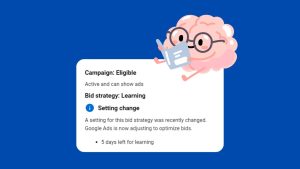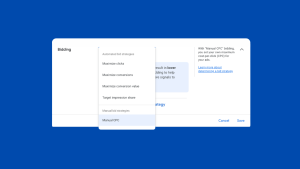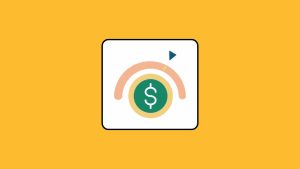The Google Ads learning phase can disrupt your campaigns, leading to inconsistent performance and wasted budget. If you’re managing a campaign, avoiding re-entering this phase is key to maintaining stability and achieving predictable results. Here’s a comprehensive collection of what triggers the learning phase and a few reasons why you want to avoid it.
Table of contents
- What can trigger the learning phase in Google Ads?
- What is the learning phase and why should you avoid It?
- The 20% Rule of Thumb
- Additional best practices to avoid the learning phase
- Monitoring and Responding to Learning Phase Triggers
- How long does the learning phase last?
What can trigger the learning phase in Google Ads?
At a high level there are two things that contribute to getting into learning phase, the magnitude and frequency of changes to an account. The larger and more often you make changes, the more likely learning phase will kick in for any given campaign.
1. Frequent bidding adjustments
- Changing a bidding strategy. Going from Manual CPC to a Smart Bidding strategy will kick off a learning phase.
- In Smart Bidding, changing target CPA or target ROAS significantly will kick off learning phase.
2. Targeting changes
- Adjusting targeting parameters like location, demographics, or audience segments.
- Adding or removing active ad groups.
- Adding or removing a significant amount of keywords.
3. Significant budget changes
- Increasing or decreasing your campaign budget by more than 20% in a short amount of time, within a week can send your campaign into learning.
Need to see how your ad spend is pacing, check out our Ad Spend Pacing Calculator and our Tips for Budget Pacing.
4. Changing campaign goals
- Switching bidding strategies, such as moving from CPA to ROAS optimization, forces Google Ads to re-learn how to deliver your campaign effectively.
5. Switching ad types or formats
- Introducing new formats or migrating to Performance Max campaigns can cause the algorithm to adjust delivery patterns.
6. Changing conversion tracking
- Either swapping or updating when a conversion triggers can cause the associated campaign to go into learning phase.
What is the learning phase and why should you avoid It?
The learning phase is the period when Google Ads recalibrates its delivery algorithm after detecting significant changes. During this time, performance is less predictable, and you’re likely to see higher costs with lower returns.
Google might discard existing performing data to re-collect new data to try to optimize the campaign further given its new parameters.
Typically, the learning phase lasts about a week. While this may not seem long, re-entering the phase frequently can destabilize your campaigns and make achieving long-term goals more difficult. Avoiding the learning phase is crucial for maintaining stable, efficient campaigns.
The 20% Rule of Thumb
One of the best ways to prevent triggering the learning phase is to follow a 20% Rule of Thumb. This rule advises limiting adjustments to budgets, bids, or settings to increments of no more than 20% within a week. To be safe I often go to 15% changes at a time.
Small, gradual changes allow Google Ads’ algorithm to adapt without needing to reset. By keeping adjustments within this limit, you can improve performance without risking campaign instability.
Examples of applying the 20% rule
- Budget changes: If your budget is $100/day, increase or decrease it by no more than $20 at a time.
- Bid adjustments: Raise or lower bids incrementally instead of making drastic changes all at once.
- Ad group removal: If you have 3 ad groups, removing an ad group that represents more than 20% of spend in a campaign could trigger a learning phase.
- Keywords: Adding 50 keywords to an ad group of 100 could trigger a learning phase.
Following this rule not only avoids the learning phase but also ensures your campaigns remain consistent and manageable.
Additional best practices to avoid the learning phase
While the 20% Rule is a great starting point, there are other strategies to consider:
Limit major changes in quick succession
Make one change at a time and wait for results before making another. This allows the algorithm to adjust incrementally. A week of time should be plenty.
Use A/B testing for gradual optimization
Instead of overhauling campaigns, use A/B testing to trial adjustments in a controlled environment. This avoids disruption while still allowing you to optimize performance.
Stabilize target CPA/ROAS goals
Frequent tweaks to CPA or ROAS targets can push your campaigns into learning. Set reasonable goals and avoid adjusting them unless absolutely necessary.
Monitoring and Responding to Learning Phase Triggers
To avoid the learning phase, it’s essential to monitor your campaigns closely. Here’s how:
Set up alerts
Enable Google Ads notifications to track if any of your campaigns re-enter the learning phase.
Be patient with performance data
After making changes, wait at least a week to gather sufficient data before deciding on further adjustments. This minimizes unnecessary disruptions.
How long does the learning phase last?
The learning phase typically lasts about 7 days, depending on the campaign type and the volume of data collected. Faster If you have an active account with conversions flowing in, slower if you have an account with less data going through.






